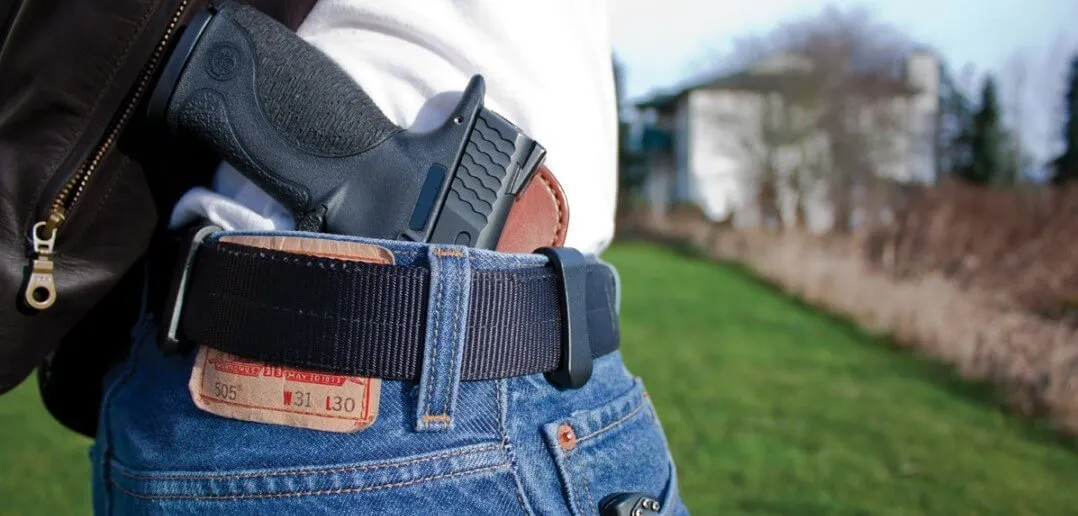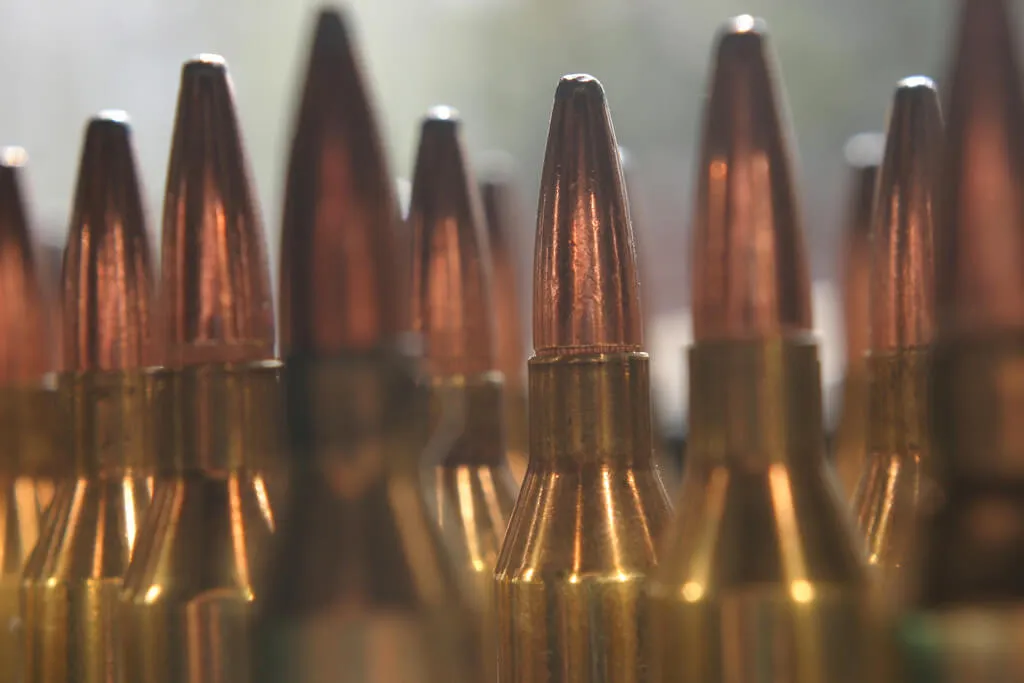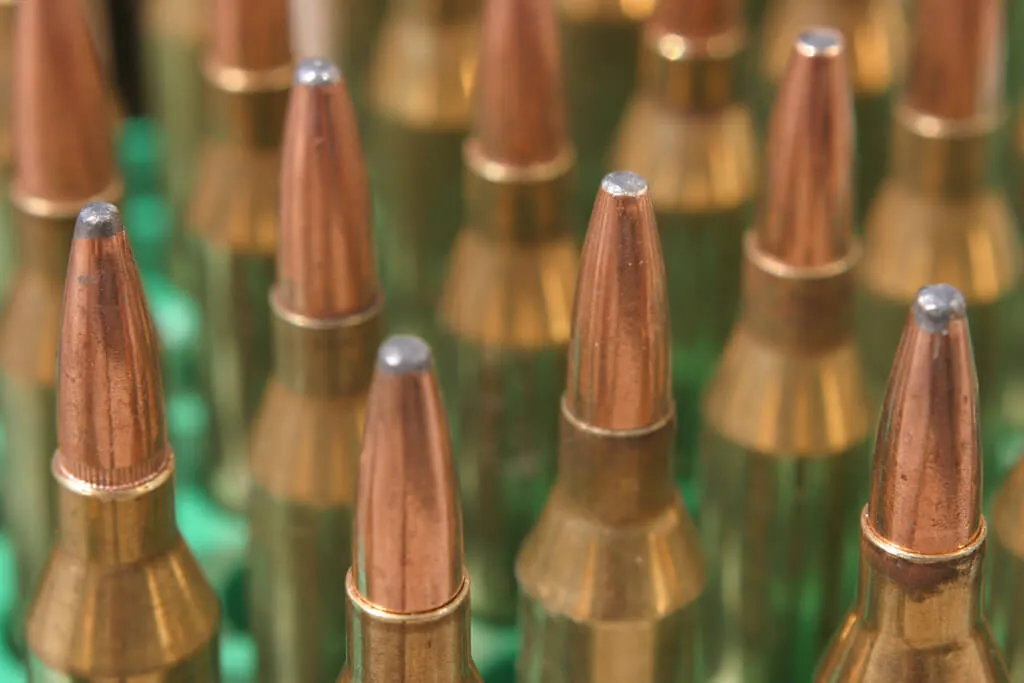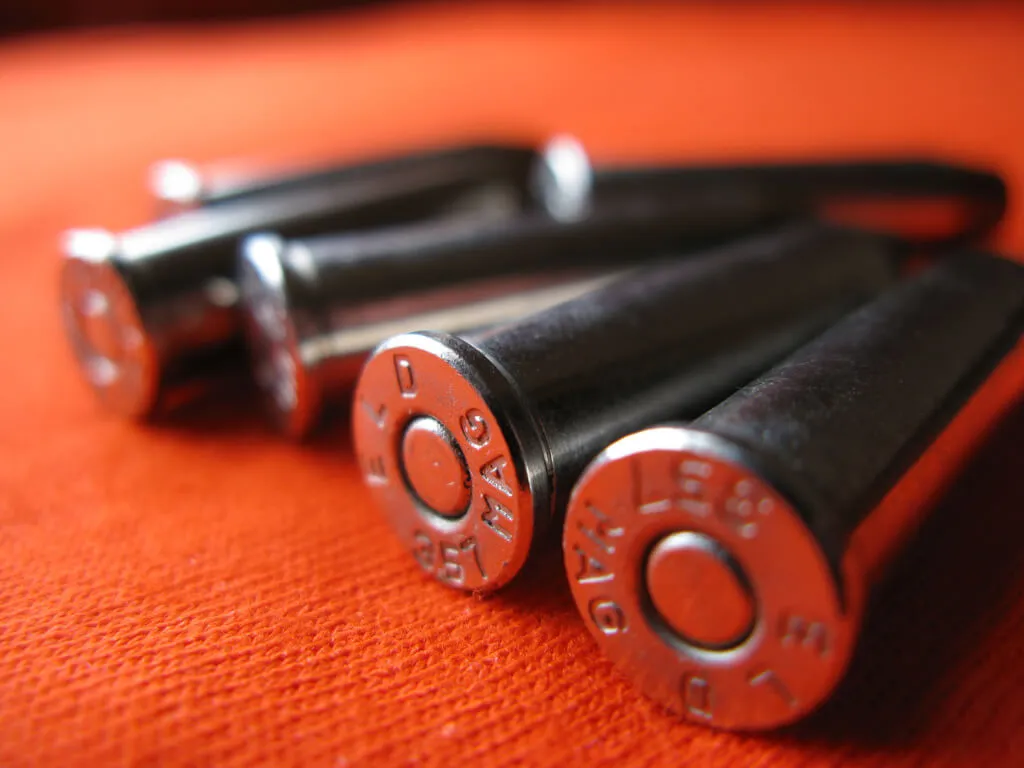The Objective Individual Combat Weapon (OICW) program intended to produce a lightweight weapon that was capable of firing kinetic energy projectiles and an air-bursting fragmentation munition. Its purpose was to have soldiers effectively attack targets at longer ranges, and attack targets protecting themselves from gunfire. It was to combine leading-edge technologies in miniaturized fusing, integrated fire control, lightweight, high strength materials, and munitions effects. The OICW was planned to increase the lethality and survivability of the individual soldier. The OICW was anticipated the provision of an all-new level of capability at extended ranges against exposed targets and against targets in defilade and intended for infantry that were in the direct line of battle. The OICW was the lethality upgrade.
The Objective Individual Combat Weapon Advanced Technology Demonstration (ATD) was to selectively replace the M16 rifle, M203 grenade launcher, and M4 carbine. As the OICW worked its way into the force structure, it was expected that modular weapons would coexist with various weapons for the foreseeable future.
Demonstrations showed a hit probability more than 0.5 out to 500 meters and 0.3 to 0.5 out to 1,000 meters. Efficacy against key personnel and light armor targets, given a hit, would be greater than the M433 High Explosive Dual Purpose cartridge fired from the M203 Grenade Launcher as well as the M855 fired from a M16A2 rifle. Goals also included a 0.5 probability of incapacitation to 300 meters (point target) and a 0.2 probability of incapacitation to 300 meters (defilade target).
Advanced technology ammunition playing an increasingly significant role on future battlefields that would allow soldiers to engage targets with lethal precision under conditions that were currently unimaginable. That was the grounds for the Army’s latest generation rifle, the Objective Individual Combat Weapon (OICW), also known as the Selectable Assault Battle Rifle (SABR).
The OICW weapon would consist of 2 subsystems, a high-explosive (HE) module, and a kinetic-energy (KE) module, with a single trigger and selector switch that operated both subsystems and interacted with the Target Acquisition/Fire Control System (TA/FCS) automatic fuse programming. The KE module used standard 5.56mm ammo and have semi-automatic and burst modes that were the same as the M4 carbine. The HE subsystem would fire the High-Explosive Air-Burst (HEAB) ammunition in 4 fusing modes. The weapon was as reliable as the M16 rifle and M4 carbine.
The OICW’s kinetic energy component would fire the same round as an M16A2 from its lower barrel and fire in either a single shot or a 2-round burst. The upper barrel fired a 20mm round of high-explosive air-bursting fragmentation at a distance of over half a mile away. A 6-round magazine in the rifle’s butt holds high explosive rounds. The 20mm round had a dual warhead, making it lethal on both sides and giving it complete coverage after detonation. The round was air-bursting and exploded at 1.5 meters above the target. This would work especially well if an enemy were hiding behind an object or lying prone on the ground.
The full-solution fire control starts with the shooter using a laser on the target for a range reading. The range would then feed into the ballistic computer, and the data would be transmitted to the HEAB round inductively. The fire control system then provides an adjusted aim point for the target to the chambered round. The round would then be fired and explode at the precise range over the target with devastating effect. The system would provide greater than 5 times the lethality at twice the range of existing conventional weapon systems and simultaneously reduce soldier combat exposure time.
The ruggedized, compact, single, integrated full solution day/night target acquisition/fire control system (TA/FCS) would have a direct view powered optic mode, thermal sighting mode, and a television/camera mode all with automatic, ballistically adjusted reticles. It included a laser range finder, compass, environmental sensor suite, a combat identification module and an infrared aiming light, and a laser illuminator pointer.
The FCS would use the laser range finder to pinpoint the precise target range at which the high explosive round would burst and relay the information to the round’s fusing system. Fragments from the bursting munition was designed to defeat PASGT armor. The sighting system could provide full 24-hour capability by employing uncooled IR sensor technology for night vision.
The sight of the OICW has Direct View Optics with video enhancements and it would be like looking at a television screen. The image could be magnified 3 times and would include an electronic compass on the screen. The system was designed to withstand military use that included airborne and shipboard operations without decreasing the OICW’s performance. The OICW was built for effectiveness for all positions such as standing, kneeling, crouching, prone, sitting, and foxhole positions.
Based on the desired effects, the shooter would be able to program the FCS to detonate grenades in one of 4 modes, namely Bursting, Point Detonation, Point Detonation-Delay, and Window.
- The Bursting mode would choose an above ground, 3-5 meter airburst.
- Point Detonation would detonate the grenade when it impacted resistance.
- Point Detonation-Delay would momentarily delay the detonation after impact to enhance effects on semi-hard targets such as car doors or light structures.
- The Window mode would command an airburst at a specified range beyond a specific aiming point to enhance effectiveness against soft targets inside buildings through windows or open doors.
While the early generation SABRs weighed approximately 18 pounds, the intention was for production units to weigh 14 pounds, or similar to the weight of a standard M16-type rifle with an M203 grenade launcher and optical sight. The FCS, along with the 20mm ammunition, was central to the system’s capability.
OICW would provide soldiers the capability to secure targets and detonate an air bursting projectile about 1 meter over the threat. It would also be able to detonate on impact. These capabilities were required out to ranges 2-3 times the effective range of existing M16/M4/M203 systems, or up to 10 football fields.














